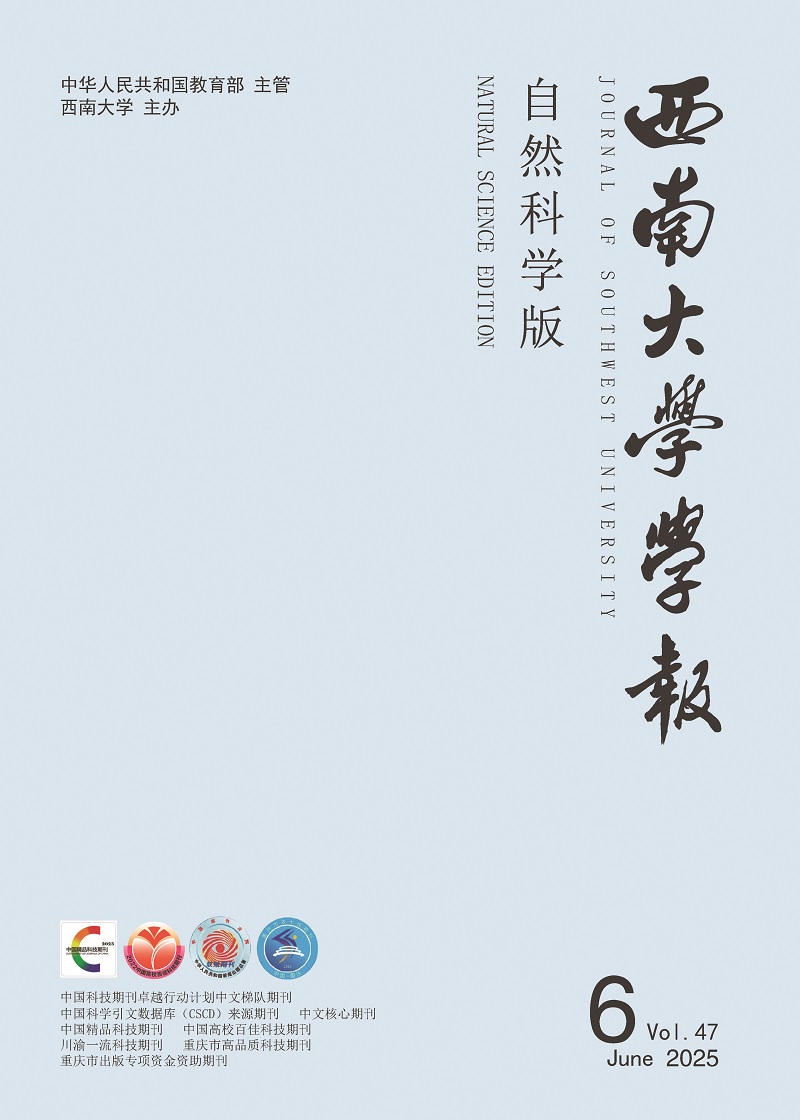-
非负矩阵的谱半径估计不仅在理论数学方面是重要的, 而且在迭代计算过程方面也是重要的.对于非负矩阵谱半径的估计, 目前已有许多研究, 如文献[1-3].
为了叙述方便, 本文采用以下的符号和记法:
不失一般性, 假设n阶矩阵A≥0, ρ(A)表示非负矩阵A的谱半径.对i=1, 2, …, n, ri(A)表示矩阵A的第i行的行和, R (A)和r (A)分别表示矩阵A的最大行和与最小行和, C (A)和c (A)分别表示矩阵A的最大列和与最小列和.
著名的Frobenius定理[1]得到如下结论:
正矩阵是非负矩阵的子类, 具有非负矩阵的所有性质.文献[4-6]在(1) 式的基础上给出了正矩阵最大特征值的界值定理.
定理1[4] 设A=(aij)n×n>0且r<R, 则其最大特征值ρ(A)满足
其中
$\eta =\underset{i,j}{\mathop{\rm{min}}}\,\ ~{{a}_{ij}},\delta =\underset{{{r}_{i}} <{{r}_{j}}}{\mathop{\rm{max}}}\,~\frac{{{r}_{i}}(\mathit{\boldsymbol{A}})}{{{r}_{j}}(\mathit{\boldsymbol{A}})}~$ .定理2[5] 设A=(aij)n×n>0, 则其最大特征值ρ(A)满足
其中
$\sigma =\sqrt{\frac{\left( r-\eta \right)}{\left( R-\eta \right)}},r,R,\eta $ 的定义同定理1.定理3[6] 设A=(aij)n×n>0, 则其最大特征值ρ(A)满足
其中r, R, η的定义同定理2, 且:
关于正矩阵最大特征值的界, 在涉及r, R和η的一切可能的界值中, 定理3的结果是最好的.
本文结合非负矩阵的迹分两种情况给出非负矩阵谱半径的上界, 并且给出数值例子加以比较.
HTML
-
文献[7]提出:若A为具有实特征值的n阶复矩阵, 则A的所有特征值λi位于区间
内, 其中
I为n阶单位矩阵, tr A为矩阵A的迹, 序列{αp}单调递减, 且
本文在上述结果的基础上, 分两种情况给出非负矩阵谱半径的上界估计.
定理4 设A≥0, 且AT=A.则
其中
单调递减, 且
证 由A≥0, 且AT=A, 可知A的特征值λi均为实数.特别地, 非负对称矩阵A的谱半径ρ(A)也是矩阵A的特征值, 故定理4成立.
定理4对非负对称矩阵A的谱半径的上界进行了估计.当A≥0且A不对称时, 有:
定理5 设A≥0, 则
其中
单调递减,
且
证 由A≥0, 构造矩阵
$\mathit{\boldsymbol{M}}~(\mathit{\boldsymbol{A}})=\frac{\mathit{\boldsymbol{A}}+{{\mathit{\boldsymbol{A}}}^{\rm{T}}}}{2}$ , 可知M (A)为非负对称矩阵, 则其特征值均为实数.注意到tr (M (A))=tr A, 结合定理4, 有其中
单调递减, 且
-
例1 考虑非负对称矩阵A=
$\left( \begin{matrix} 1 & 2 & 3 \\ 2 & 6 & 4 \\ 3 & 4 & 1 \\ \end{matrix} \right)$ .关于矩阵A的谱半径的上界, 运用文献[1, 4-6], 分别得到:ρ(A)<12, ρ(A)<11.866 0, ρ(A)<11.674 2, ρ(A)<11.477 2.应用定理4, 得ρ(A)≤9.481 6(p=6).实际上, ρ(A)≈9.466 9.从数据来看, 估计结果是很精确的.例2 考虑非负矩阵B=
$\left( \begin{matrix} 1 & 1 & 2 \\ 2 & 3 & 3 \\ 4 & 1 & 1 \\ \end{matrix} \right)$ .关于矩阵B的谱半径的上界, 运用定理5有下面的比较结果(表 1) :实际上, ρ(B)≈5.741 7.从数据来看, 非负矩阵B的谱半径上界的估计结果得到了改进.从以上的两个例子可以看出, 对一个非负矩阵, 不管其对称还是非对称, 都可以构造一个基于矩阵迹的单调递减序列, 有效地改进非负矩阵谱半径的上界估计结果.






 DownLoad:
DownLoad: